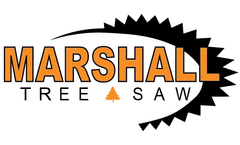Tree Damage Articles & Analysis: Older
9 articles found
For the fish ponds, 0.5mm 0.75mm 1mm thickness is popular, because the pond liner should have a tensile strength, and puncture resistance, the sharp rock and tree branches cannot damage the pond liner easily. And these thickness is flexible, not heavy, easy to install. ...
Assisi Cruiser Assisi Cruiser is our mobile field collection app that works hand in hand with Assisi ...
While many trees provide beauty and variation to a property, large trees can often cause unforeseen problems when inclement weather occurs. When ice, lightning, high winds or heavy impacts damage a tree, there is usually no choice left but to determine the best plan for removal. Unfortunately, this isn't always as simple as ...
The less-bad news: An upcoming event will shed light on the disease, plus many other problems that can bug Ohio’s trees. Diseases, pests and whether you need to treat them Ohio State’s Tree Diagnostic Workshop — subtitled “What’s Wrong With My ...
Much of this can come from the biomass of the tree itself, but that requires investment in plant, which is not always possible in an industry that is widely distributed among many small producers. ...
Essentially, biomass harvesting thins out woodlands and forests, removing foliage that can further facilitate the spread of a wildfire. Small diameter trees or damaged trees are removed, and other plants may be taken out to reduce forest density. ...
Unfortunately this method of construction can badly damage trees since a byproduct of the excavation is root severance. Trees are extremely sensitive to disturbances in the soil around them reason being that, contrary to popular belief, trees do not have massive roots that go down deep into the soil but rather have lots of ...
ByTerram
The seven MCPFE sustainable forest management (SFM) indicators to be reported by forest types are presented (forest area, growing stock, age structure/diameter distribution, forest damage, tree species composition, naturalness, deadwood). Definition and requirements of forest types for the MCPFE indicator reporting are provided and the key‑factor concept ...
A large-scale survey was carried out in France in 2000 to sample the most frequently observed species developing on spruce (Ips typographus, Pityogene schalcographus) and pine (Tomicus piniperda, Ips sexdentatus) in 898 locations distributed throughout wind-damaged areas. The local abundance of each species scored on a 0 to 5 scale was analysed using geostatistical estimators to ...







